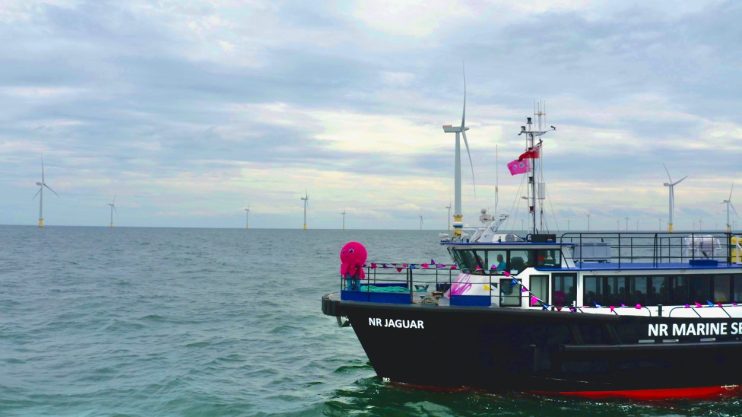Floating offshore wind ripe for subsidies, Octopus’ renewable boss argues

The government should target subsidies at emerging technologies where the UK can be a world leader, such as floating offshore wind, argued the boss of Octopus Energy’s renewables arm.
Zoisa North-Bond, chief executive of Octopus Energy Generation, told City A.M. that floating offshore wind has “huge potential” and could benefit from taxpayer support – while helping to drive down bills and reach net zero over the long term.
She believed it was crucial for the UK to hold on to its position as a “very early leader” in renewables, and that the government needs to “give confidence to investors in the market.”
“If you want to do something quickly, that really signals intent for new business models that need that confidence to back them up, I think that [subsidies] stacks up,” the energy boss said.
While not in favour of blanket offerings of taxpayer cash, she argued that the US Inflation Reduction Act and EU subsidy packages showcased the energy security benefits of government support, as the West looks to alleviate its dependence on China for minerals and technology.
North-Bond said: “We have to start now setting confident renewables targets along with the rest of Europe, and trying to bring some of this stuff a bit closer to home. So ultimately, we can see and control the supply chains better.”
Floating offshore wind turbines are buoyant on the surface – supported by a platform and often connected to the seabed by cables – allowing them to be installed in much deeper waters than conventional turbines.
They are also vast in size, with average floating offshore wind turbine being nearly as tall as the Shard and consisting of double the concrete of the Eiffel Tower.
Downing Street is targeting 5GW of floating offshore wind generation by the end of the decade, enough to power five million homes, as part of its wider 50GW offshore target for 2030.
Octopus works in partnership Simply Blue, a developer of floating offshore wind projects, and is open to investing further in new projects.
It has also recently pledged $20bn (£15.6bn) investment in new offshore wind projects worldwide by 2030 – as first revealed by City A.M.
As it stands, there are just two floating offshore wind farms in the UK with limited capacity, Hywind (30MW) and Kincardine (50MW), operated by Equinor and Principle Power respectively.
However, developments are expected to rise sharply over the current decade, with mass industrialised deploy expected from around 2027
Trade association Renewable UK calculates that if £4bn was spent upgrading 11 ports across the UK to develop domestic floating offshore wind turbines, it could generate £26.6bn in economic activity by 2040 – backed by tens of thousands of jobs.
When approached for comment, a department for energy security and net zero spokesperson said: “We are also providing £160m through our Floating Offshore Wind Manufacturing Investment Scheme, currently open for applications to kick start the development of the port infrastructure needed to deploy floating offshore wind at scale.
“Our support for floating offshore wind will help grow the economy, with the overall offshore wind sector expected to grow to support around 90,000 jobs by 2030.”